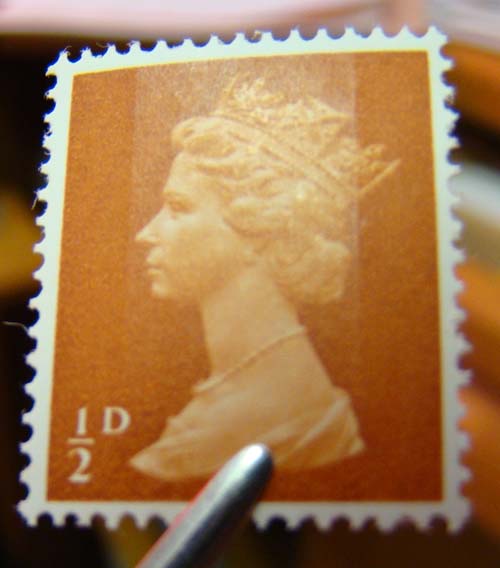Machin Frequently Asked Questions
No. One of these years I will begin to dispose of some of our nearly 250,000 used Machins, but I am not selling any right now. I am a bit closer, having just recently (Nov 2021) finished a shopping cart-type store on this website (click to view).
Check out the links page for a list of Machin dealers who have either a web-site or e-mail address (there are certainly other Machin dealers in the world, but this list are those known to myself that have an internet presence).
There are four Machin books that are likely better for the Machin specialist: Stanley Gibbons, The Connoisseur Catalogue of Machin Stamps, The Complete Machin Stamp Catalogue (G J Burgess), and The Complete Deegam Machin Handbook - take your pick (of course, you should have all four since you can never get enough stuff about Machins!).
The Scott Standard Postage Stamp Catalogue did a major update to their Machin listings with the release of their 2000 catalogue (found in Volume 3). It is a good starting point but still falls short of listing many varieties (such as phosphor bars).
With a lot of patience. If your spouse is not already a Machin-widow, they soon will be.
Some of the varieties are easy to identify. Others require more advanced tools, such as an ultraviolet light (a must for sorting Machins). With that said, you will still pull your hair out and wonder why you ever started collecting Machins in the first place!
Good luck...
I have always considered these spots "cancellation" or "sorting" marks. Linn's Stamp News in their April 24, 2006 issue (page 42, Collectors' Forum), notes the following:
"The spots are British mail-test markings that are applied to the faces of envelopes in tracking mail pieces during a mail test. Some of them happened to fall on the stamps affixed to the face of the envelope."

[Dec 17/10 update] Ian Billings of Norvic Philatelics notes the following:
Mechanised sorting really took off in Britain in 1959 with the application of rows of phosphor dots across the envelope. The top row, which sometimes hit the stamps, reflects the inward half of British postcodes which are much more precise than most others (except Canada which copied the UK system). The inward half is used to sort mail within (or arriving in) a sorting office for local distribution to addresses served by that office.
The outward half is used to send mail from one sorting office to another, and was translated as a row of dots near the foot of the envelope. The system has changed over the years, the coloured dots became blue dots, and now orange fluorescent bar-codes are used.
 Remember that I am not a
dealer in stamps...
Remember that I am not a
dealer in stamps...
PERFIN: PERForated INitials
SPIF: Stamps Perforated with Individuals or Firms
Any stamp in good condition should have some kind of value. Do Machins with a PERFIN have more value than one without? Generally speaking, I think a stamp with a perfin is valued less than a stamp without a perfin. This is due to less demand by collectors, even though perfins may be harder to find!
I have a few Machins with perfins but do not know about specific scarcity factors. I suspect (like in any country) that certain perfins are quite scarce, but does that mean they will sell for more? It all depends on supply and demand - a specialized Machin collector may, on any given day, pay a bit more for a certain perfin pattern in order to complete their collection.
I tend NOT to use a UV light to identify the 2-band vs Centre-band tagging on early Machins ... or at least I try to do it with 'natural' or standard room lighting as often as possible (this may not work all of the time).
Here are two images; the stamp was held in front of me and rotated until the fluorescent light above me reflected off the stamp in such a way that the tagging showed up. This is a very quick and easy process to sorting these kinds of early phosphor tagging.
2-band tagging:

Centre-band tagging:

The Machin design has appeared on the stamps from other countries. This site does not record these varieties.
There is currently no plan to include non-Machin stamps here, including the King Charles III stamps.
For even more varieties on Machin stamps, check out The Complete Deegam Machin Handbook
(simply the best Machin
handbook available anywhere) by Douglas Myall -
click for details.
Booklet pane numbers used courtesy the
Modern British Philatelic Circle
who publish 'The Bookmark' Catalogue
![]()
© 1996-2023, 2024 Robin Harris
Adminware is a trademark of Adminware Corporation.